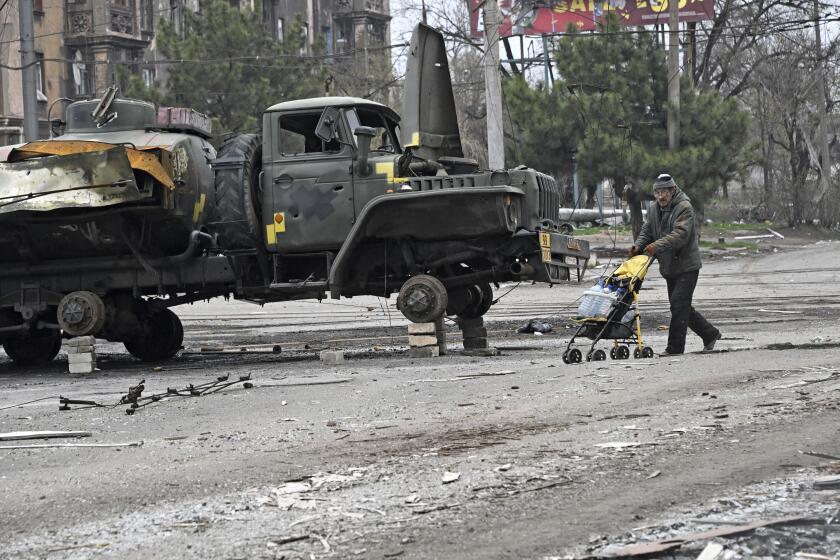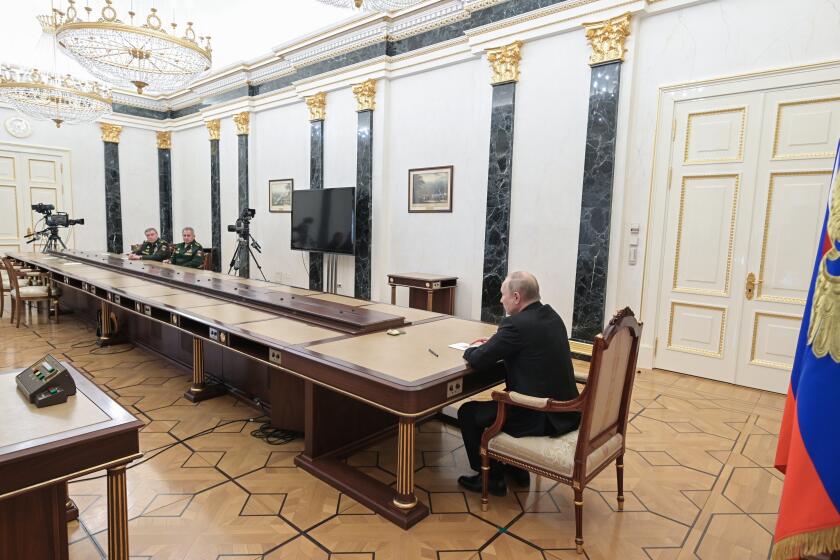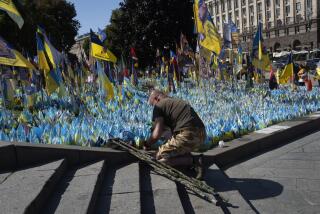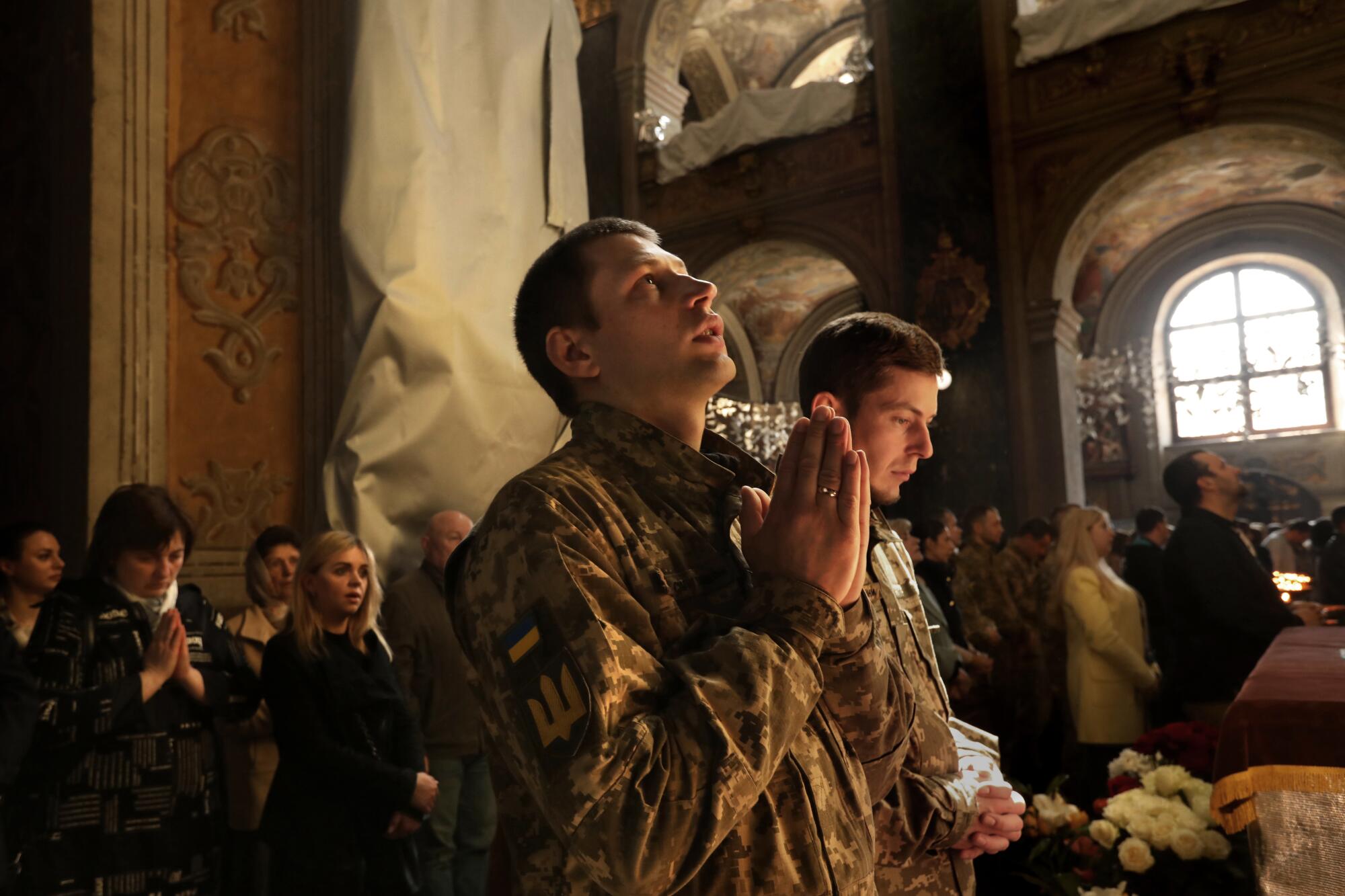
- Share via
LVIV, Ukraine — Camouflage netting, spent shell casings, hunks of jagged shrapnel: In this 17th century Baroque jewel of a church in the western Ukrainian city of Lviv, these are considered sacred relics.
During Sunday services at the city’s Garrison Church, Ukrainian soldiers in uniform, flanked by civilians young and old, bowed their heads and clasped their hands in prayer, surrounded by ancient tokens of faith and artifacts of modern battle.
Since war erupted in Ukraine more than two months ago, this landmark house of worship, named for the apostles Peter and Paul, has become a lodestar for those praying for their army’s success against a larger and more powerful invader.
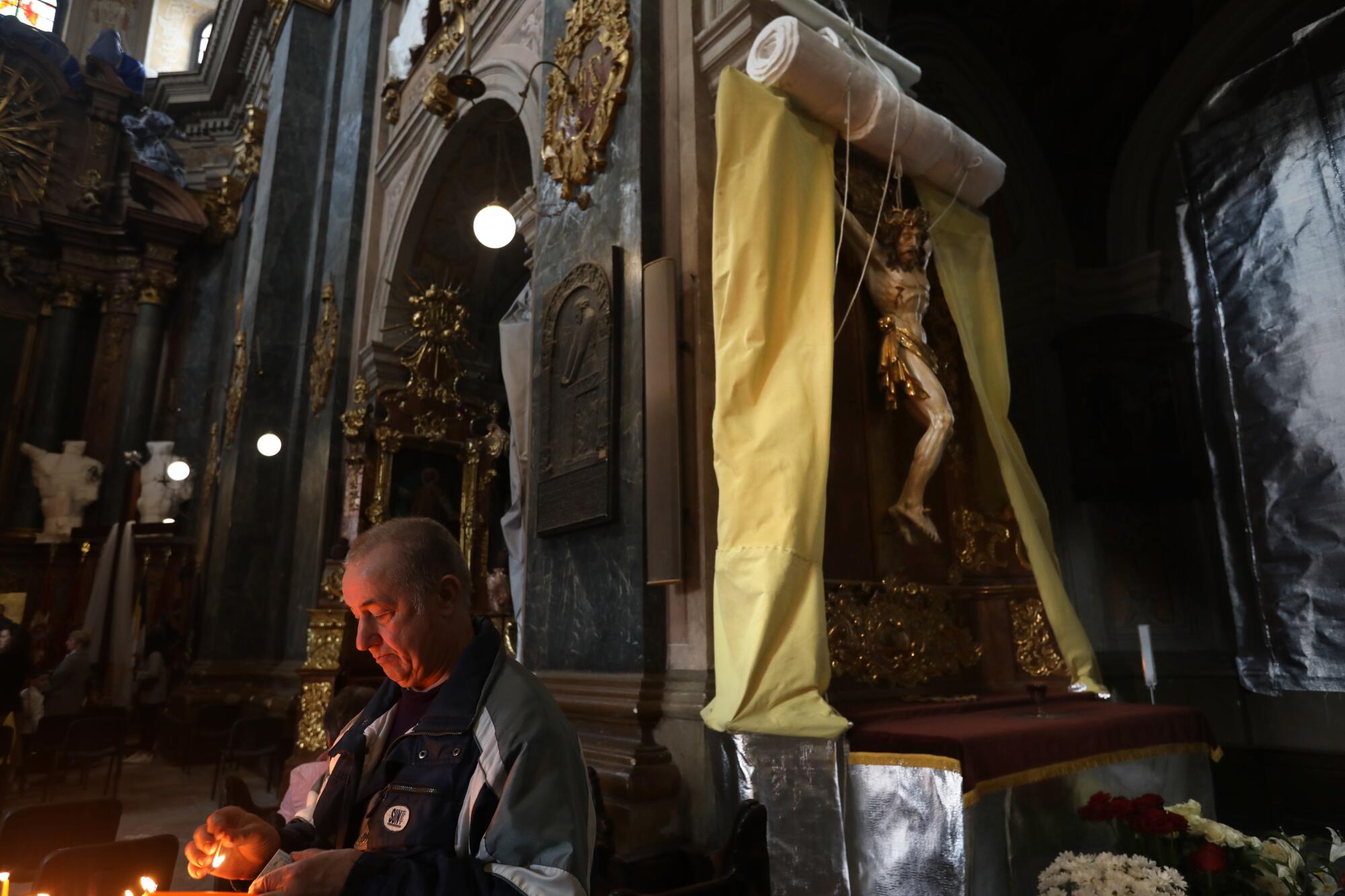
The church is open to all, but it is most deeply entwined in the lives of military families and those close to them — a demographic which, at this ragged national moment, encompasses nearly everyone in the country.
Beneath its soaring arches, soldiers’ wives appeal for divine protection for husbands serving on the front lines. Bereaved mothers and fathers weep. Weddings are bracketed by military funerals.
“We try to give comfort to all of them,” said Father Nestor, a chaplain affiliated with the church, who has a brother serving in the military. “Here, we are all together.”
House Speaker Nancy Pelosi met Ukraine’s president in Kyiv in the highest-level U.S. visit of the war. Some Mariupol civilians are said to be rescued.
Lviv, less than 50 miles from the Polish border and North Atlantic Treaty Organization territory, has largely been spared the battles raging in the country’s east and, in the war’s earlier weeks, in the region surrounding the capital, Kyiv. Nonetheless, the church’s treasures are heavily protected against potential bombardment, adding to its martial air.
Cladding and tarpaulin, secured with cords, surround its ornate altars and time-tarnished icons. The delicately wrought chandelier has been packed away. Precious paintings are covered over with silver thermal blast blankets.
Angelic statuary is swathed in protective padding. A larger-than-life crucifix carved from rare hardwood is surrounded by a window-shade-like contraption that allows it to be alternately displayed and shielded.
The church’s military-themed role, however, long predates the war that began on Feb. 24. Its main memorials and exhibits date back to 2014, when Russia seized the Crimean peninsula and fomented a separatist war in the country’s east. That conflict had already killed more than 13,000 people when the current full-scale invasion began.
In a side aisle off the central nave, portraits of war dead from 2014 to the present gaze out from mountings on placards. A heap of battlefield detritus — bullet casings, a canteen shot full of bullet holes, a Kalashnikov magazine — forms a shrine of sorts.
Over it all stands a simple cross of white birchwood, the only thing left standing when a military tent in the eastern province of Luhansk suffered an artillery hit.
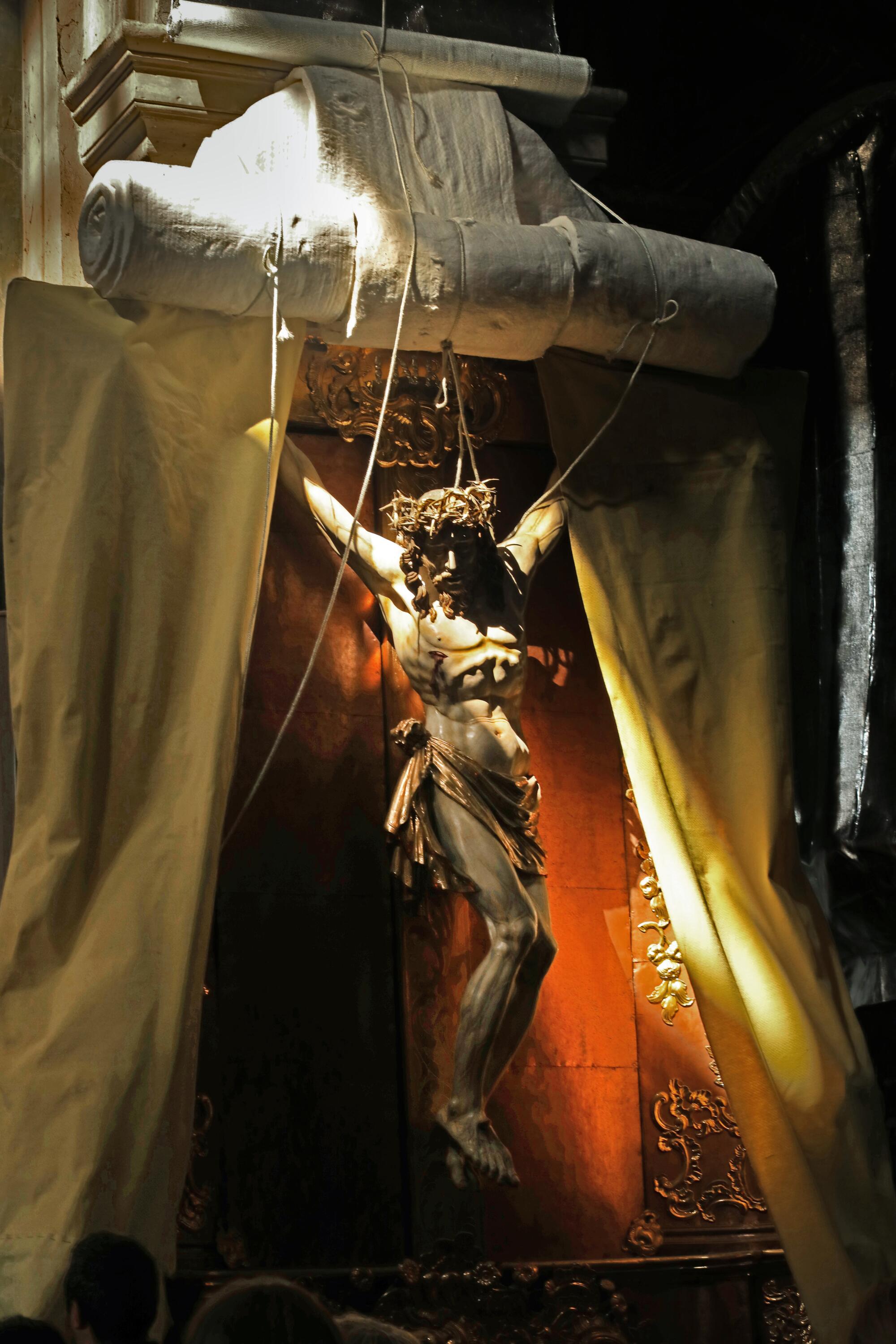
As they would be to traditional altars, worshipers are drawn to the display for prayer and remembrance. One middle-age man stood before the tangle of metal, head bowed. When he lifted his head, his eyes were red.
“I had so many friends who died,” he said. “I think of them here.”
Set in a cobblestoned square in the city center, the Garrison Church’s affiliation is Greek Catholic, a significant religious minority among Ukraine’s 44 million people, who are mainly Orthodox. But it is still known to some locals as the Jesuit church, after the Catholic order that founded it, which was expelled by the Soviets in 1946.
If he fears a humiliating loss, Putin could order the use of a small-scale nuclear weapon against Ukraine.
The Jesuits are perhaps best known for rigorous devotion to education and learning, but the order is also closely associated with chaplaincy services, including for the military, which helped pave the way for the church’s current incarnation.
In its earliest form, the church was a simple wooden structure on what was then the edge of Lviv, near the old city walls. It was replaced in the early 1600s with a splendid edifice that was one of the largest churches in the then-confederation of Poland and Lithuania.
During the Soviet era, the war-damaged church was used as a warehouse and book depository. Ukraine became independent in 1991 when the Soviet Union collapsed, but it was not until nearly 20 years later, in 2010, that authorities set out to renovate the historic structure.
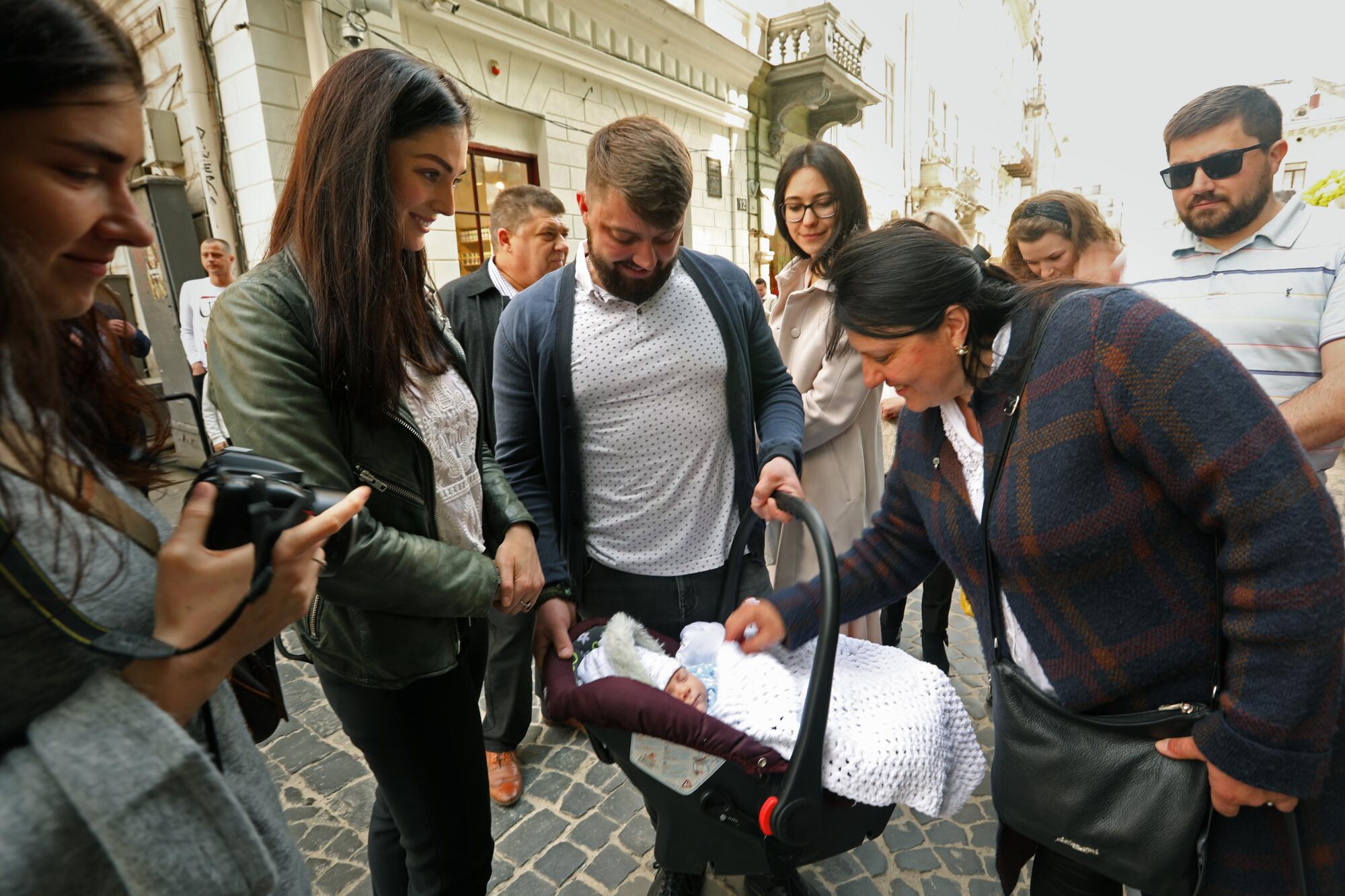
On Sunday, as people milled about between services, a family group gathered in the church’s nave for a baptism.
The infant’s mother, Yaryna Bidyuk, gave birth alone in a Polish hospital after fleeing for safety in the war’s first days. Her soldier husband Taras, who has been deployed since the fighting began, met his son for the first time last week.
After the ceremony, both were beaming. Little Mativii, swaddled in a white coverlet, squirmed in his bassinet and yawned.
Soon the father would return to the fight.
“But for now, we’re happy,” the mother said. “At least we had this moment.”
More to Read
Sign up for Essential California
The most important California stories and recommendations in your inbox every morning.
You may occasionally receive promotional content from the Los Angeles Times.
